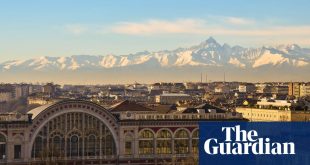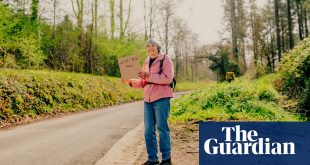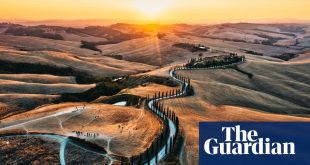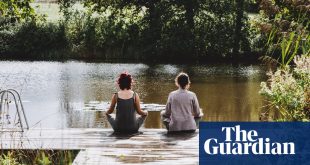I have been made in these rocks. Here have I shaped my personality,” Salvador Dalí said of the landscape around his home of Portlligat, plus neighbouring Cadaqués and Cap de Creus. Dalí lived in this village for most of his life, setting up home in a fishing hut from 1930. It was, for him, a place of “geological peacefulness”.
This area of Catalonia – the most easterly point of Spain – is the endpoint of my road trip from Brighton via Chartres, Carcassonne and Languedoc. Dalí brought me here. His beguiling and surreal imagery fired my young imagination; his art was a gateway to the weird. Ever since discovering that the hallucinatory landscapes that frame his work are every bit as strange as Dalí portrayed them, I’ve wanted to visit. I’m here for Dalí and for the rocks. In my pocket a geological curio from Brighton beach also makes this something of a pilgrimage.
My base is Cadaqués, a small, coastal town with a St Ives vibe and a similarly bohemian reputation and salty history. It’s a fashionable coastal town with a tight patchwork of whitewashed houses, slate pathways, narrow streets, grey pebbled beaches and a multitude of places to eat. What began as a simple fishing village gained its reputation through artists and communities drawn to the light, solitude and beauty.
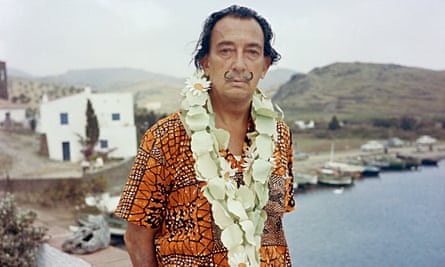
Mick Jagger, Luis Buñuel, Marcel Duchamp and Albert Einstein – who’s said to have played his violin there – have all been noted visitors, but Dalí put the town on the map. A statue of him – looking haughty – stands on the seafront, a trail depicts images of the town painted by him, and the privately owned Dalí Expo has a collection of 300 prints from books he illustrated, including Venus in Furs, Faust, Alice’s Adventures in Wonderland and the Bible.
Cadaqués can be unpleasantly busy and hot in the summer, which is why I’m here in autumn. Temperatures are in the mid-20s and there’s room to roam. The light is beautiful, the sea is warm and inviting – but I want to do more than swim and sunbathe.
The collection in the Dalí Theatre-Museum in Figueres will do little to convert those who find Dalí’s art gimmicky and shallow. Its four floors feature mainly later-period art which, compared with his best-known work, comes across as kitsch and overly ornate. A giant Cadillac-cum-chained-goddess-cum-weeping-boat sculpture in the courtyard looks like the kind of thing Banksy’s vacuous Mr Brainwash might have knocked up in Exit Through the Gift Shop if budget was no issue.

The highlights are Dalí’s early paintings, the Mae West room and a floor dedicated to paintings of rocks, stone and lichen from his beloved coastline. “Oh, look, he went through a pebble phase,” I hear a young American woman say. That’s one way of putting it. However, the best moment of my trip is the geological wonderland that is Cap de Creus natural park, a few miles west of Cadaqués.
The level of protection awarded to this area is the highest possible for a park of its type in Spain. The only road in is closed to cars from June to October, and on some autumn weekends but the park can be reached by bike, on foot (two hours from Cadaqués) or, as I choose, by bus from Portlligat.
“Treat the landscape here as a museum,” a ranger says. “Do not veer from the path, do not remove anything from the landscape.” Not only have all invasive species been successfully eradicated – restoring the balance of ecology – so have all traces of a Club Med holiday resort that closed in 2003.

Alighting at Paratje de Tudela, which was one of Dalí’s favourite places to paint, I find myself in a prehistoric and hallucinatory landscape. The Pyrenees in the distance are a reminder that this landscape was formed by the mountains crashing down into the Mediterranean here.
Succulents, samphire, shrubs, yellow lichen, juniper, wild rosemary and cacti add a colourful contrast to the volcanic schist. I follow a path that descends close to the sea, occasionally peppered with viewing posts suggesting shapes that might be seen in the rock formations: a camel, a rabbit, a supine figure. These vistas inspired Dalí’s double-image style of painting, seen in famous works including The Persistence of Memory and The Great Masturbator – which depicts a human face in the shape of the rock formations.
The geology does play tricks on the eyes. A cream blanket that has somehow ended up draped on a distant rock looks for all the world like a Dalí-esque statue of the Virgin Mary.
after newsletter promotion
The weirdness of this landscape is a result of northerly metamorphic and granite rocks – shale and pegmatite – mashed up when the Pyrenees were formed and then exposed to seawater and the corrosive effects of the northerly tramontane winds. Cream and golden boulders, looking like folded dough, sit among dark jagged slate with honeycomb weathering. Small multitudinous crevices look like hooded eye sockets of myriad skulls, all watching me. The hills do appear to have eyes.
Walking routes of between four and eight kilometres are marked out around the natural park. Places to eat are scarce, but Restaurant Cap de Creus – near the lighthouse at the park’s easterly edge – offers sea views and good regional food. While sturdy walking boots are essential for much of this environment – as are sun cream, water and a hat – those with impaired mobility will find the paved paths in the Tudela area easier to navigate.

My final destination is Dalí’s house in Portlligat. It pays to book well in advance; spaces are limited to eight per tour. While our multilingual tour guide and a short film offer a rather sanitised version of Dalí’s personal life, the house, gardens and ephemera give a richer sense of his tastes and passions. Extended over the decades, his former home is a rabbit warren of exquisitely decorated rooms and more gentle eccentricities. Where Dalí’s wife Gala had a birdcage for her canaries in the bedroom, Dalí had a tiny one for a single cicada, whose calls soothed him to sleep. His swimming pool, our guide says, was “inspired by the curious shape of a piece of polystyrene” but it’s clearly a huge cock and balls. In the garden, along with the giant eggs adorning his roof is one that has been “cracked open”. A large hole at its side is clearly an invitation to visitors.
I first saw this egg 20 years ago in a documentary, The Soft Self Portrait of Salvador Dalí, made in 1970 and narrated by Orson Welles. In between drowning pianos, giant shirts and unfathomable monologues from Dalí, a bare-chested young man is seen hatching from this egg and crawling over the rocks. Later, he rows a boat using crucifixes for oars. His name was Drako Zarhazar. He modelled for Dalí and lived in Portlligat in the late 1960s as part of the artist’s entourage before relocating to Brighton.
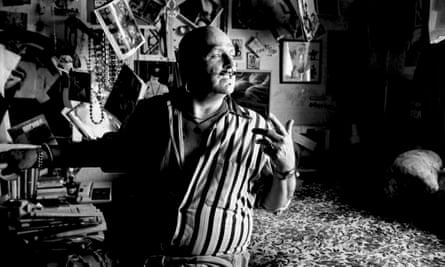
In many ways, Drako epitomised the bohemian and artistic spirit of my home town. He sported a fine curlicue moustache in tribute to Dalí. His favoured attire was a cape, a fez and a pair of Crocs. He wore a tiny hag stone from Brighton beach – a totemic “lucky” stone with a hole – around his throat. Over the years we had partied and dined together and even made a short film. Yet he had little recollection of who I was. As the result of a car crash, coma and severe memory loss, Drako always greeted me with: “Bonjour! Have we met before?” He had never seen his eggstraordinary performances in the documentary, so I tracked down a copy in the mid-noughties and we watched it together. It was the last time ever I saw him.
Crawling inside Dalí’s egg I took the hag stone from Brighton beach and placed it there. For Drako. For Dalí. For the fragility of memory. For pilgrimage. And for the wonders of geology.
 Top Naija News: Nigerian News, Breaking News Nigeria and World News Top Naija News is a daily news publication in Nigeria, delivering the latest breaking news in Nigeria and around the world.
Top Naija News: Nigerian News, Breaking News Nigeria and World News Top Naija News is a daily news publication in Nigeria, delivering the latest breaking news in Nigeria and around the world.
